
Blue Jasperware drum
Late 18th century
Wedgwood
A pedestal or base on which a lamp, candleholder, vase, figure or similar item could be mounted.
Bequeathed by John Irving, 1915
Reference: 5322
Can be found: Centre shelfMaterials and Masters

Brick from the Old Crown, Burgate Tudor
Earthenware
Tudor bricks have a distinctive shape: they are much thinner than modern bricks.
Reference: CANCM:nn
Can be found: Centre shelfMaterials and Masters

Brick with floral pattern from Kingsbridge Villas, Best Lane
19th century
Earthenware
Kingsbridge Villas used to stand where the new Beaney extension has been built in Best Lane.
Reference: CANCM:nn
Can be found: Centre shelfMaterials and Masters
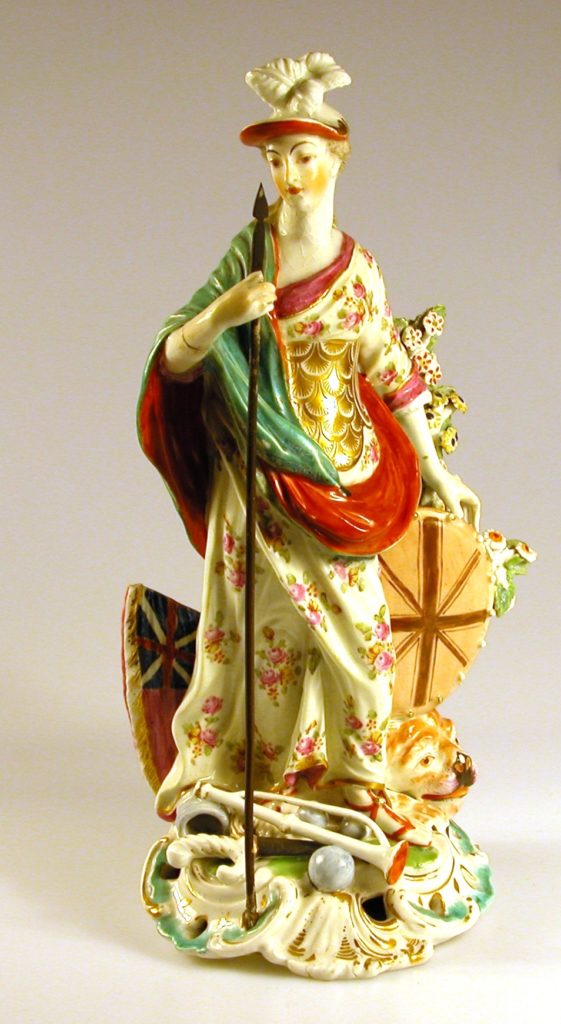
Britannia
1745, Chelsea
Porcelain
Bequeathed by John Irving, 1915
Reference: 5273
Can be found: Materials and MastersTop shelf

Chinese-style cup and saucer 18th century, Venice
Bequeathed by John Irving, 1915
Reference: 5510, 5511
Can be found: Centre shelfMaterials and Masters

Clay pipes and stump to press down tobacco
17th century
Reference: 2003.575
Can be found: Centre shelfMaterials and Masters

Cochiti Pueblo figure
Late 19th century
Earthenware
Typical of pottery made by the Cochiti Pueblo people in New Mexico, USA, in the second half of the 19th century and possibly by the famous Cochita potter Seferina Sevenna. The figures produced were...
Typical of pottery made by the Cochiti Pueblo people in New Mexico, USA, in the second half of the 19th century and possibly by the famous Cochita potter Seferina Sevenna. The figures produced were often humorous and wear waistcoats, standing with hands on hips, head up and mouth open. Animal-shaped pots were also popular Cochiti productions and several examples are displayed in the Cabinet of Curiosities, in The Study.
Audio description and insights Reference: CANCM:nn
Can be found: Materials and MastersTop shelf

Coffee cup and saucer
18th century, Vienna
Porcelain
Bequeathed by John Irving, 1915
Reference: 5519, 5520
Can be found: Centre shelfMaterials and Masters
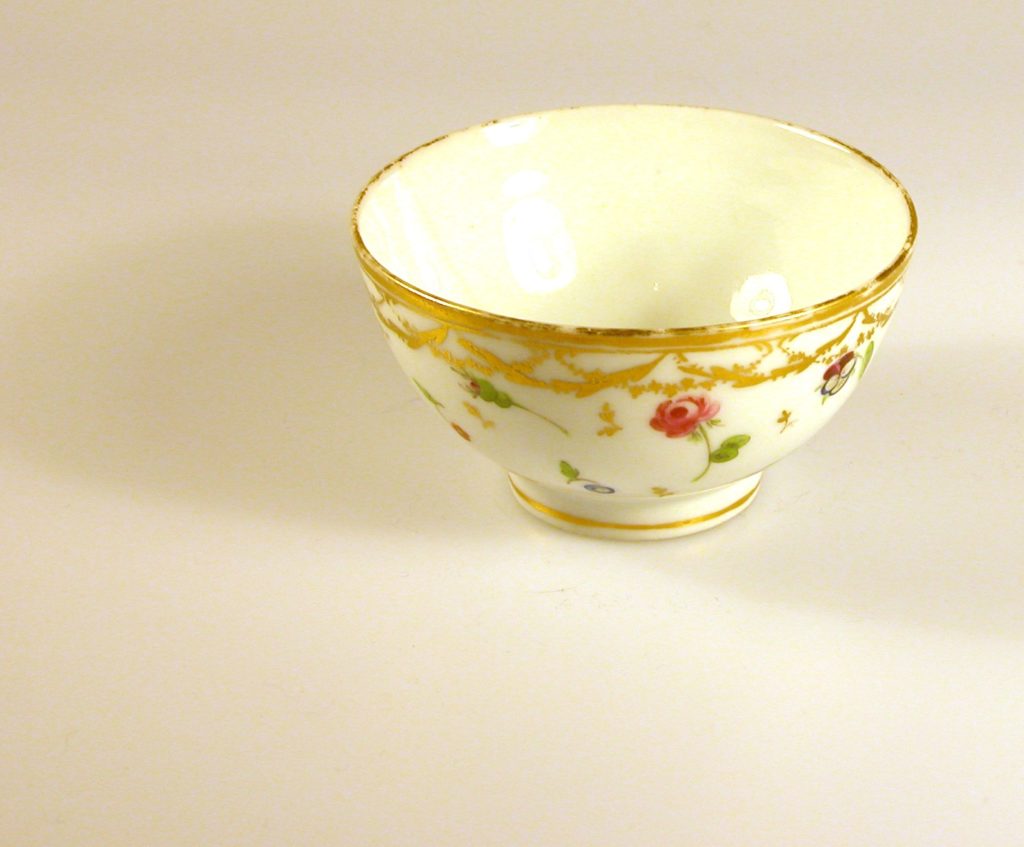
Cup and saucer
Early 19th century, Nyon, Switzerland
Bequeathed by John Irving, 1915
Reference: 5457-8
Can be found: Centre shelfMaterials and Masters

Cup and saucer with Italian views 18th century, Naples
Porcelain
Bequeathed by John Irving, 1915
Reference: 5451-2
Can be found: Centre shelfMaterials and Masters

Cup, saucer and cover with turquoise riband
18th century, Derby
Bequeathed by John Irving, 1915
Reference: 5283
Can be found: BaseMaterials and Masters

Decorated tiles made at Tyler Hill, Canterbury
Medieval
Glazed earthenware
Tiles like these were made by pressing clay into a mould and filling the pattern indented in the clay with slip (slightly diluted clay) of another colour, before glazing and firing. They were expensive and used in cathedrals, abbeys, churches and royal palaces. Many depict flowers or mythical beasts such as dragons. They can be joined in various ways for extended and repeat patterns.
Reference: 8743 and (nn)
Can be found: BaseMaterials and Masters

Dish with coat of arms 1637, Delft, Netherlands
Tin-glazed earthenware
Reference: 20
Can be found: Materials and MastersTop shelf

Dolls’ house tea set, washing basin and water jug
Bequeathed by Miss G. H. Veraguth to the daughter of Dr Wynn and presented to the Museum in memory of Miss Veraguth, 1974
Reference: 9870
Can be found: Centre shelfMaterials and Masters

Flue tile from Fordwich with combed pattern
Roman
Presented by Mrs Harrison
Reference: 9757
Can be found: Centre shelfMaterials and Masters

Fragment of an Iznik tile
From the Summer Palace at Samarkand
Probably collected by the Reverend Henry Lansdell, 1882, and presented by Mary Lansdell in memory of her husband, 1922
Reference: CANCM:nn
Can be found: BaseMaterials and Masters

Fragments of pipe clay figurines
Roman
Reference: (78 & 82)
Can be found: Centre shelfMaterials and Masters

Grey ware jug with fingerprint decoration
Medieval
Earthenware
Reference: 8807
Can be found: Centre shelfMaterials and Masters

Grey ware pot
Romano-British
Found in Canterbury
Reference: 8448
Can be found: Materials and MastersTop shelf

Hop Queen
1865-72, Ceramic and Crystal Palace Art Union
Designed by Joseph Durham, carved by E Foster
‘Made from a trial clay sent to Alderman Copeland’, according to the museum accessions register.
Presented by Lieutenant Colonel Copeland
Reference: 5182
Can be found: Materials and MastersTop shelf
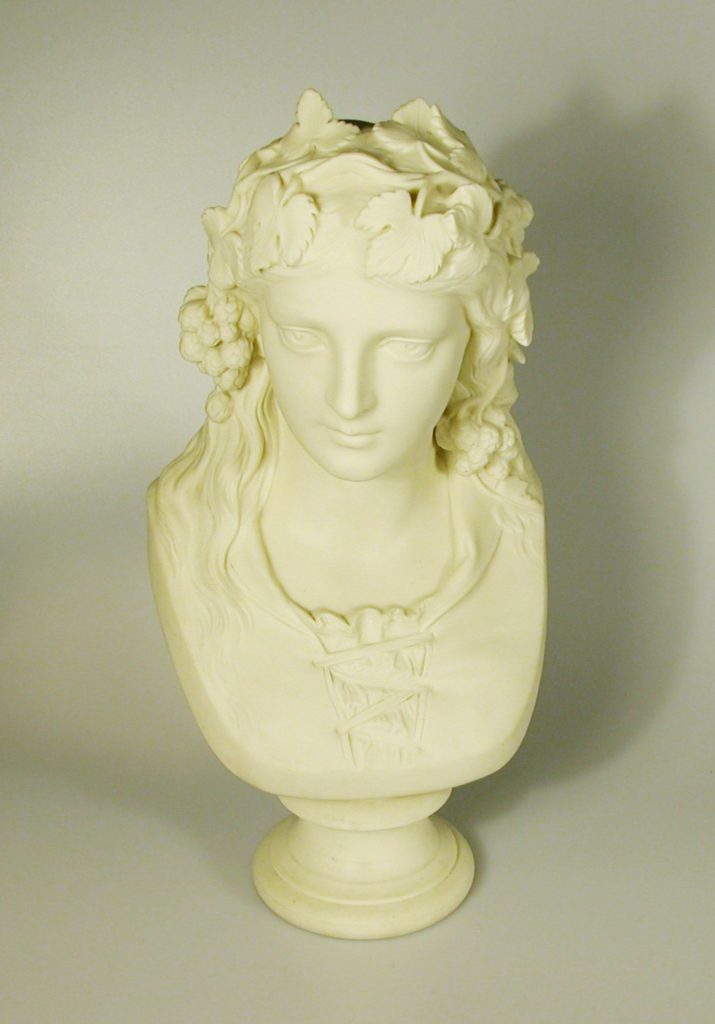
Hop Queen
1872, Joseph Durham
Parian ware
Made from fine white china clay known as ‘Parian marble’.
Reference: 10432
Can be found: Materials and MastersTop shelf

Kaolin powder
Presented by S. Horsley, 1900
Reference: P.8
Can be found: BaseMaterials and Masters

Kaolinite
Reference: P.7
Can be found: BaseMaterials and Masters

Kaolinite from Cornwall
Hydrous aluminium silicate, the ‘magic’ ingredient that gives strength and translucency to pottery when added to clay, creating porcelain.
Reference: K1320
Can be found: BaseMaterials and Masters

Knife with porcelain handle
Reference: 635
Can be found: Centre shelfMaterials and Masters

Long dark green glass bottle
Presented by Mr E W H Court, 1928
Reference: 6663
Can be found: BaseMaterials and Masters

Mars and Cupid, and Venus and Cupid
1745, Chelsea
Porcelain
Bequeathed by John Irving, 1915
Reference: 5274, 5275
Can be found: Materials and MastersTop shelf

Mask sculpture
Alfred Palmer (1877-1951)
Plaster
Plaster is made from the earth mineral Gypsum, which also forms the Selenite on display in the case opposite focused on Glass.
Purchased from the artist’s family with aid from the Friends of Canterbury Museums, 1997
Reference: CANCM:nn
Can be found: Centre shelfMaterials and Masters
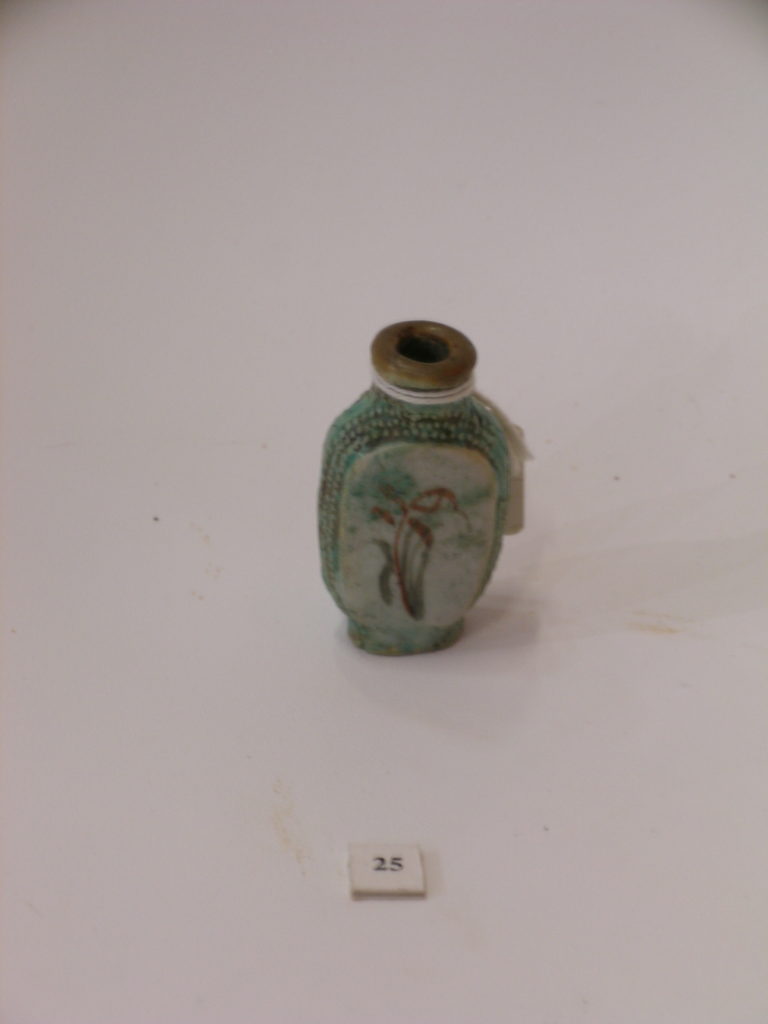
Miniature bottle
Ceramic
Reference: 6153
Can be found: Centre shelfMaterials and Masters

Mug commemorating coronation of George VI
Designed by Dame Laura Knight, DBE, RA Earthenware
Reference: 2009.830
Can be found: Centre shelfMaterials and Masters

Mug with image of garden tools
Wedgwood
Designed by Eric Ravilious.
Presented by Hilary Alpin, 2003
Reference: 2003.492
Can be found: Materials and MastersTop shelf

One of a pair of open trellis baskets
18th century, Worcester
Porcelain
Bequeathed by John Irving, 1915
Reference: 5357
Can be found: Centre shelfMaterials and Masters
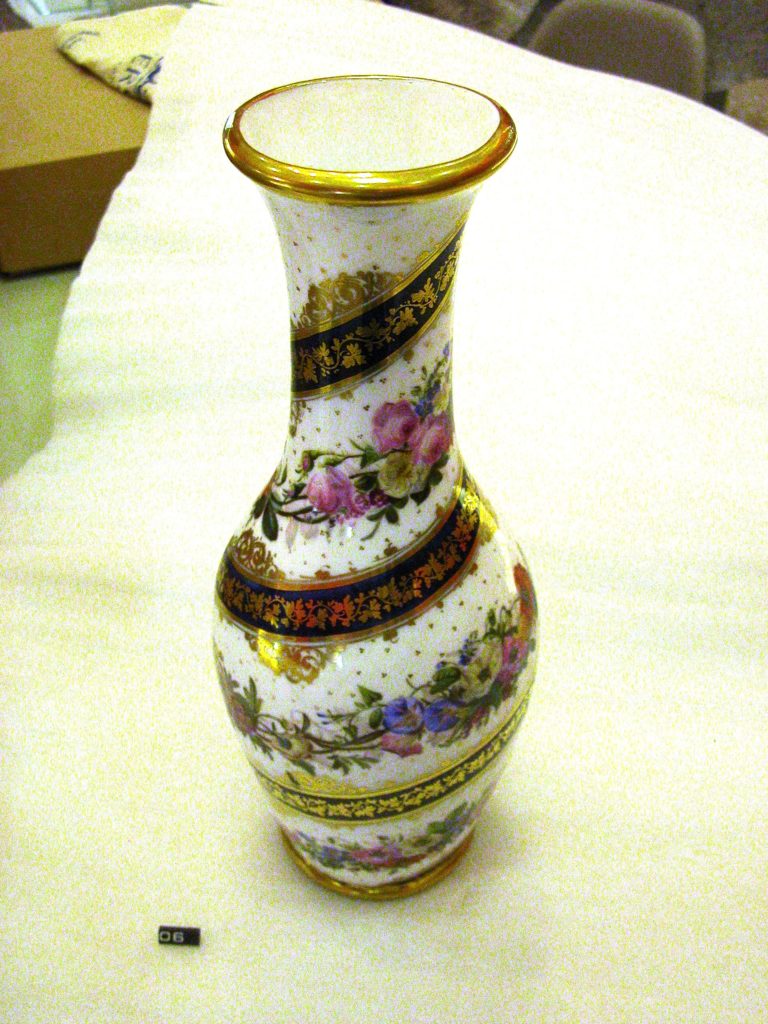
Pair of vases
Perhaps Jacob Petit, France
Bequeathed by John Irving, 1915
Reference: 5432
Can be found: Materials and MastersTop shelf

Plate with Chinese figures Porcelain
Reference: CANCM:nn
Can be found: Materials and MastersTop shelf

Porcelain doll
Porcelain, often called bisque, was used in the manufacture of dolls until the advent of plastic. Fine features could be modelled and painted for faces. Usually it was just the head, and perhaps also the hands and forearms, that were made of porcelain and attached to cloth or wooden bodies.
Bequeathed by Miss Anne Clelland, 2003
Reference: 2003.85.169
Can be found: Centre shelfMaterials and Masters

Red ware teapots
Presented by Lieutenant Colonel Copeland
Reference: 44, 45
Can be found: Materials and MastersTop shelf

Roman lamp
Late 1st to early 2nd century AD, found in Whitstable
Terracotta
Presented by Mr F. W. Robins
Reference: 8380
Can be found: Materials and MastersTop shelf

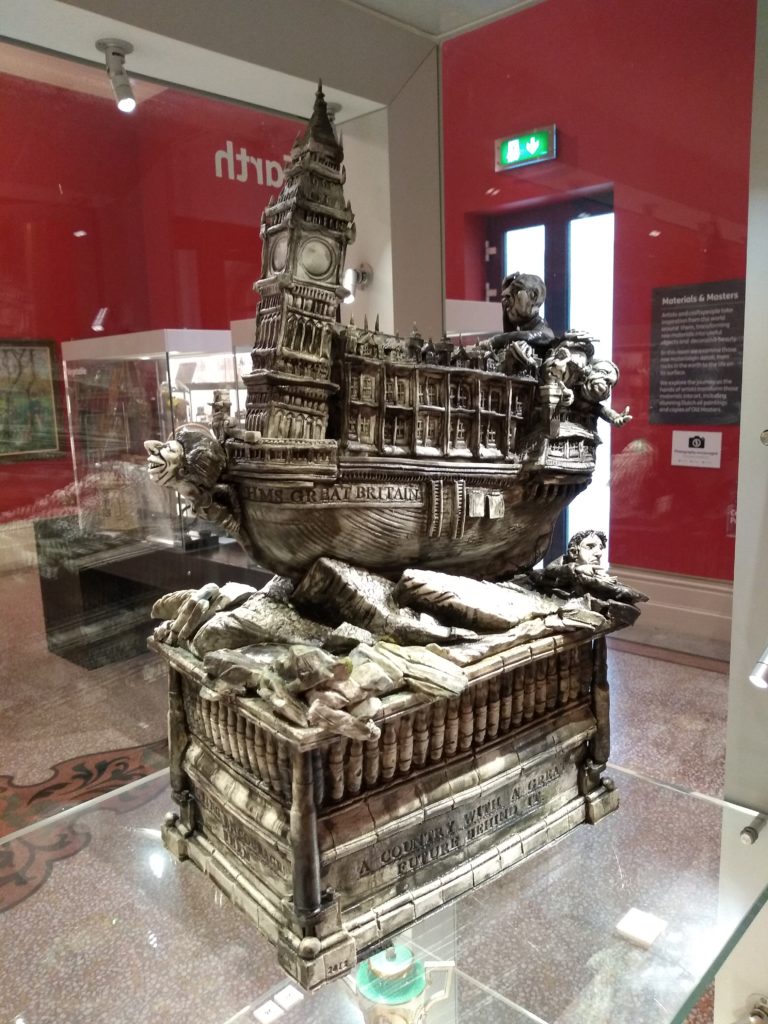
Ship of Fools
2012, Clive Soord
Porcelain
Clive Soord is a sculptor in ceramics, and a ceramics tutor at Canterbury College. He can be seen within his studio in the photograph by Neil Sloman displayed in the Materials and Masters room.
“Ship of Fools is a work inspired by the old saying ‘too many steersmen sink the ship’. It’s a satirical political work. The tall ship is indicative of the ships we had when we had an empire. Westminster represents our seat of government on the poop deck, and we have a gaggle of politicians all waving their white papers pointing in different directions. The figurehead on HMS Britain is Thatcher, running the ship aground on the Grand Banks RBS, Lloyds etc.”
Lent by the artist
Reference: CANCM:nn
Can be found: BaseMaterials and Masters

Teapot
Bequeathed by John Irving, 1915
Reference: CANCM:nn
Can be found: Centre shelfMaterials and Masters

Tiles
16th – 17th century, Delft, Netherlands
Tin-glazed earthenware
Tiles like these more usually had blue on white decoration. They were used for tiling fireplaces.
Presented by Miss Haddaway
Reference: 7773
Can be found: BaseMaterials and Masters

‘Glen Mist’ teapot
1970s, Wedgwood
Designed by Susie Cooper
Bone china
Reference: 2002.320.1-2
Can be found: BaseMaterials and Masters
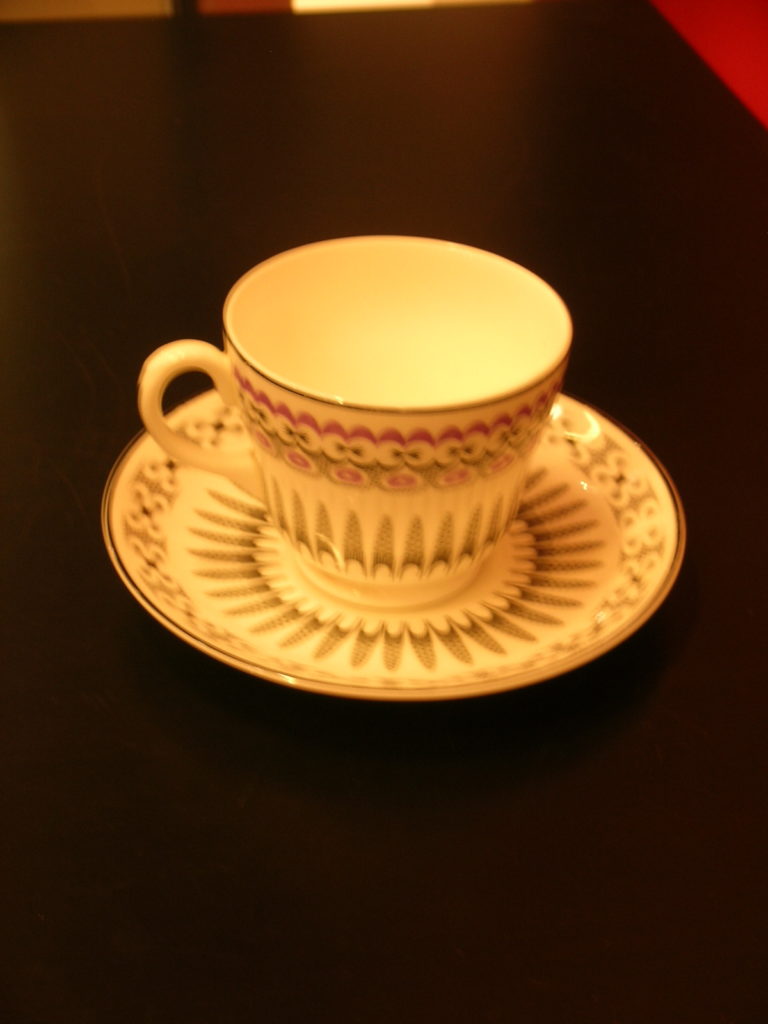
‘Heartsease’ cup and saucer 1952, Wedgwood for the Orient Line
Designed by Edward Bawden
Bone china
Bequeathed by George and Lorna Maynard, 2010
Reference: 2010.1.3-4
Can be found: Centre shelfMaterials and Masters

